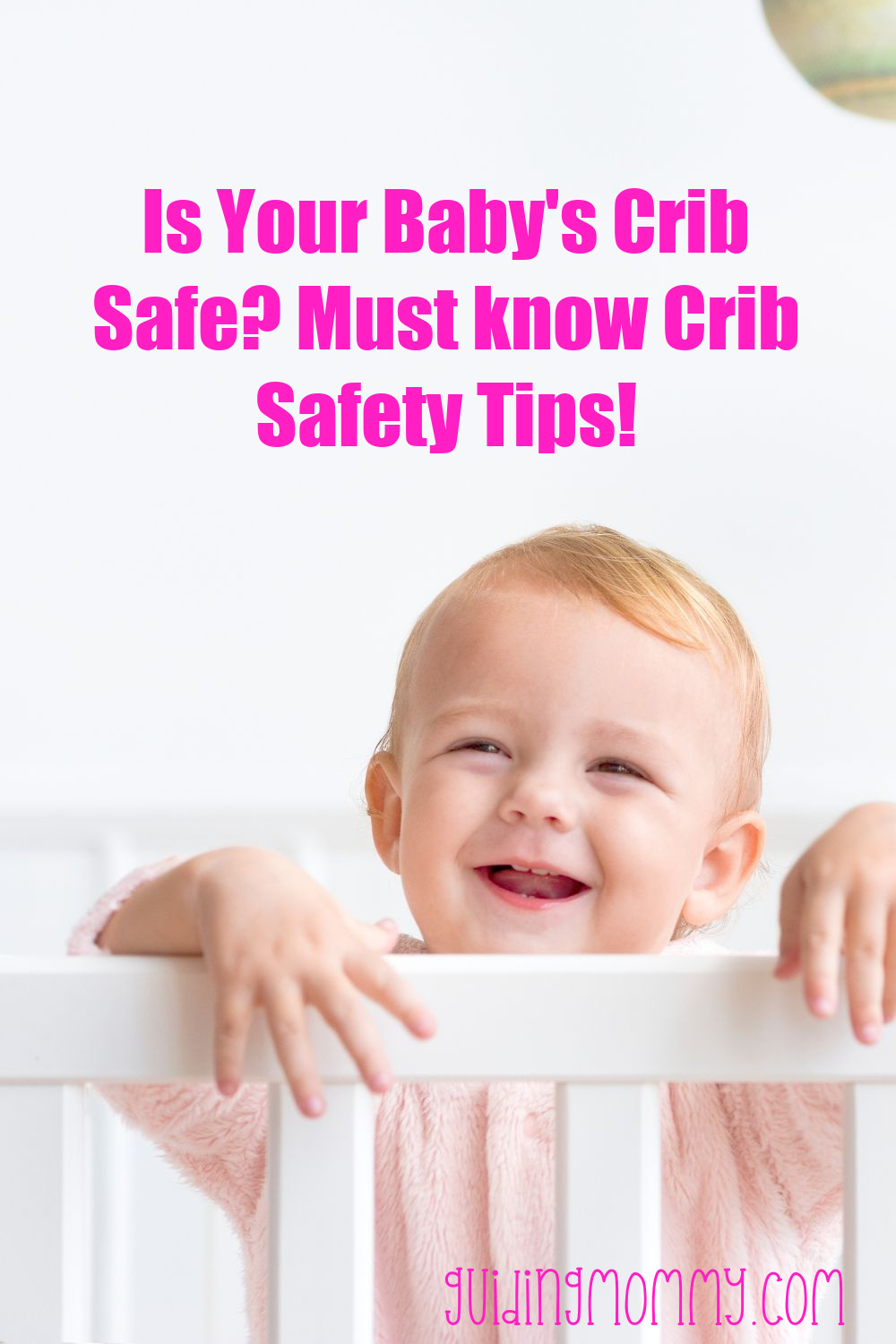We all want the safest sleeping environment for our babies. But Is Your Baby’s Crib Safe? Check out some Must know Crib Safety Tips!

Is Your Baby’s Crib Safe? Must know Crib Safety Tips!
Crib Safety Tips
There’s a good chance right now you’re looking for ways to baby-proof your house. You’re covering light sockets and blocking staircases, but one of the biggest dangers may be overlooked.
Your baby will spend a lot of time in their new crib, which means it’s a safe hot spot. Babies need 12-16 hours of sleep a day in order to help their brains and bodies develop. But getting all those hours of sleep isn’t easy.
We’ve all struggled to overcome sleep problems, but there are a lot of dangers we can prevent. If you want your baby’s sleep environment to be as safe as possible use the tips below.
Reduce the Risk of SIDS With the Right Mattress
Even if you follow the American Academy of Pediatrics (AAP) advice and put your baby to sleep on their back, they could still roll over in the middle of the night. Most of the time rollovers end up posing no risk, but why take any chances?
Breathable, firm mattresses like the Newton Crib Mattress have been shown to reduce suffocation risk. Until I read the reports, I had no idea how big a difference the crib mattress makes. If you splurge on one item make it a high-quality crib mattress.
The fit of the mattress is also important. The mattress should fit the crib precisely so that there are no gaps anywhere.
If You’re Not Handy, Have a Professional Put the Crib Together
There are great sites like TaskRabbit and Angie’s List where you can find people in your area that can handle odd jobs. Handyman work is among the most commonly requested and provided services online.
You can find plenty of professionals who can put the crib together for you. That way you know it was done correctly and there’s no need to invest in new tools.

Safe Crib Construction
Finding someone to put the crib together is just half the battle. The crib itself needs to have safe components and construction. Safe crib construction means:
- Slats are 2” apart or less
- Corner posts should sit flush with end panels
- Firmly secured hardware
- Wood that’s free of splits and cracks
- No sharp edges or rough spots
There are a few crib designs that are no longer considered safe. Crib designs to bypass altogether include:
- Drop-down sides
- Headboards and footboards with decorative cut-outs
Those two types of cribs are no longer made because they don’t meet modern safety standards. If you get a handy-me-down crib with drop-down sides or decorative cut-outs, it’s best to keep it as an heirloom and get a new crib for daily use.
Check the Paint or Finish
Even if the crib is constructed well, the decorative exterior could pose a safety hazard. Lead paint isn’t a concern with new cribs, but if you’re using an antique that was passed down for generations it could be an issue.
With new cribs. you’ll want to make sure the paint or stain is low- or no VOC. That means the paint off-gasses fewer toxins that are released into the air.
See if the Crib Meets Consumer Product Safety Commission (CPSC) Standards
The Consumer Product Safety Commission has created a set of standards for cribs that help parents gauge safety. They are the minimum requirements that manufacturers must abide by when building their cribs. Retailers that sell cribs are also held to federal standards.
Choose the Crib Location Carefully
Now that you’ve got your safe crib built and in the nursery, you need to decide where it should go. Where you put the crib is just as important as the construction in terms of safety. The crib should never be put in arm’s reach of a window or draperies. It should also be well away from wall-mounted decor and cords.
Another mistake is to hang a mobile directly over the crib. You don’t want the baby to get curious and start grabbing on the mobile once they’re able to stand up.
By carefully selecting your crib products and where the crib is located you can sleep a little easier at night knowing your little one is sleeping soundly. Sweet dreams!
Looking for more ways to make life easier as a parent? Help make parenting easier during the early years with these tips


